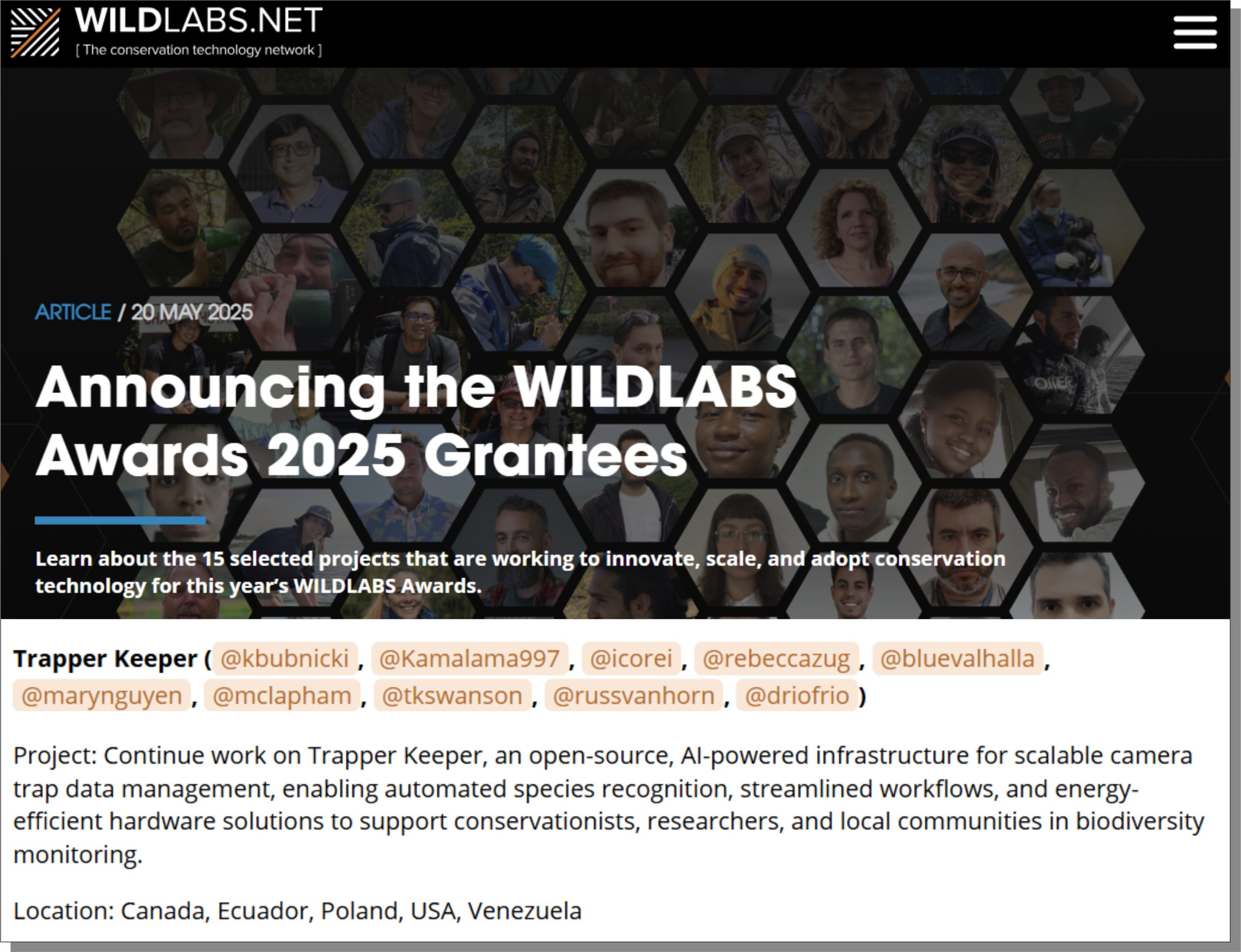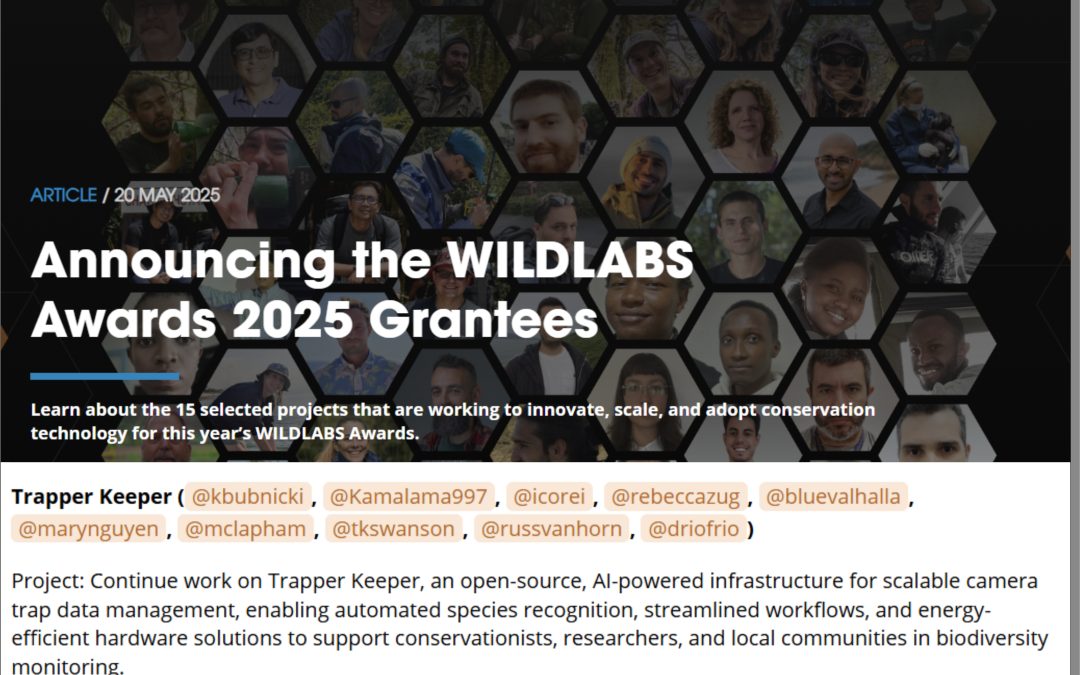We are happy to share some exciting news: this year, the Open Science Conservation Fund has been honored with a 2025 WILDLABS Award for our collaborative project, Trapper Keeper. This initiative brings together an exceptional team from the BearID Project (U.S. & Canada), the Universidad San Francisco de Quito (Ecuador), and the San Diego Zoo Wildlife Alliance (U.S.)
We’re especially proud that the core of the Trapper Keeper project was developed at the Mammal Research Institute PAS. Over recent years, it has continually evolved, integrating cutting-edge AI tools like TrapperAI to enhance wildlife monitoring and conservation efforts.
https://wildlabs.net/article/announcing-wildlabs-awards-2025-grantees

Built upon the foundation of our existing TRAPPER 2.0 BETA, we will develop a robust, scalable system that offers both portable, pre-configured field servers and containerized deployments for in-house use. Trapper Keeper will empower users to efficiently manage, process, and share biodiversity data — even in low-resource settings — and connect local monitoring efforts with global biodiversity infrastructure.
Over the course of the project, we will:
-
Release a stable, open-source TRAPPER 2.0 platform suitable for both small and large-scale camera trap projects.
-
Improve usability and accessibility by simplifying deployment (automated setup, Docker containers), enhancing workflows (upload, AI processing, export), and designing interfaces for both experts and citizen scientists.
-
Provide comprehensive support resources, including clear documentation and video tutorials, to broaden user adoption.
-
Develop and test portable servers, using Raspberry Pi 5 with AI HAT+ and NVIDIA Jetson, enclosed in rugged field-ready casings.
-
Deploy scalable solutions on energy-efficient Arm-based Ampere servers for larger projects.
-
Integrate AI species classifiers and video analysis tools, including models from SDZWA and BearID, into the TRAPPER platform.
-
Enable seamless publishing of standardized Camtrap DP datasets to GBIF via the Integrated Publishing Toolkit (IPT).
-
Conduct real-world usability testing with diverse partners, including USFQ (Ecuador), Nanwakolas First Nations (Canada), Open Science Conservation Fund & Mammals Research Institute PAS (Poland), and Guaquira Reserve (Venezuela).
